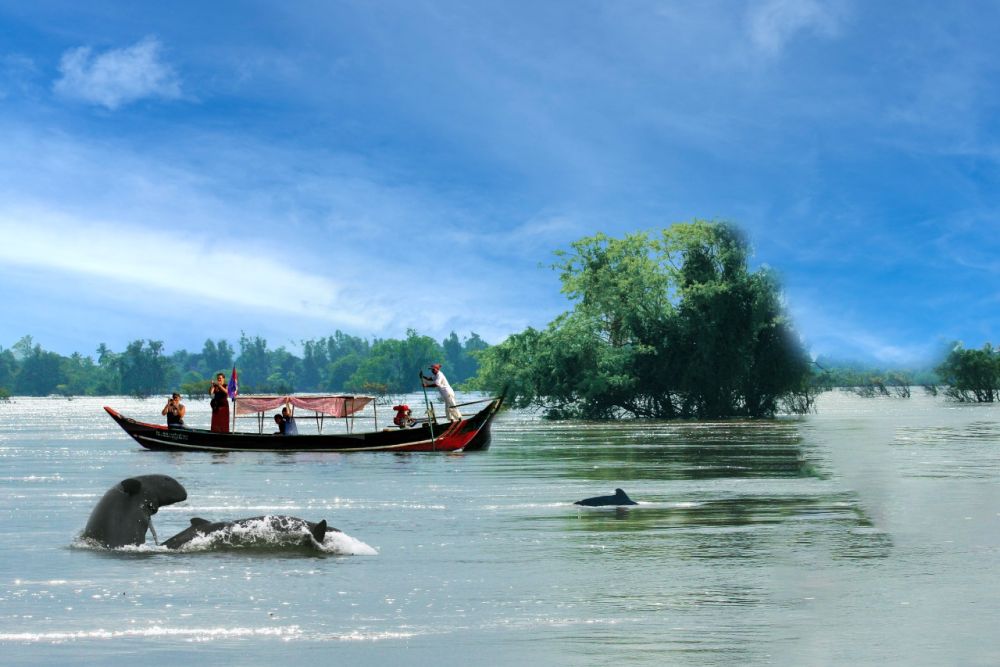

Kratie is a serene province in northeastern Cambodia, famed for its charming riverside scenery and the rare freshwater Irrawaddy dolphins that inhabit the Mekong River. The history of tourism in Kratie is intertwined with the history of Cambodia itself, as the country opened up to tourism in a significant way after the 1990s, following a period of isolation due to the civil unrest and the rule of the Khmer Rouge.
Tourism in the Kratie province began to take shape during the early 2000s, when the country's overall stability improved. Initially, Kratie was a destination for more adventurous travelers and those interested in ecotourism and experiencing the day-to-day life of rural Cambodia. The presence of the endangered Irrawaddy dolphins was a major draw for early visitors, sparking a form of nature-based tourism that became a cornerstone of the area's appeal.
As tourism infrastructure developed, including better roads and increased accommodation options, Kratie became more accessible to a broader group of travelers. By the mid-2000s, with the establishment of community-based tourism initiatives and support from NGOs, the province began to see a slow but steady increase in visitor numbers. Tours to see the dolphins, river cruises, and cultural visits to local villages became more organized and tourism became an important aspect of the local economy.
Today, Kratie is part of the greater Mekong tourism circuit. Recent trends show a growing interest in sustainable and responsible tourism practices. Visitors are drawn to homestays, eco-lodges, and tours that promote environmental conservation and benefit local communities. Besides dolphin watching, tourists can explore the river islands, such as Koh Trong, visit the Phnom Sombok temple, and enjoy the region's peaceful rural scenery by cycling or taking part in guided treks.
The tourism sector in Kratie, while growing, faces challenges such as the need for improved infrastructure and services to accommodate an increase in visitors without compromising the region's ecological and cultural integrity. Efforts towards responsible tourism are crucial for the protection of endangered species and for providing visitors with authentic experiences. The future of Kratie tourism lies in balancing development with conservation, ensuring that growth in visitor numbers does not come at the cost of the natural environment or the well-being of local communities.
In conclusion, the history of tourism in Kratie mirrors Cambodia's broader embrace of international visitors, moving from a period of hesitancy and limited access to a burgeoning industry that offers unique and enriching experiences. Despite the ongoing global and regional challenges, Kratie continues to showcase the potential of tourism as a force for positive change, sustainability, and cross-cultural understanding.